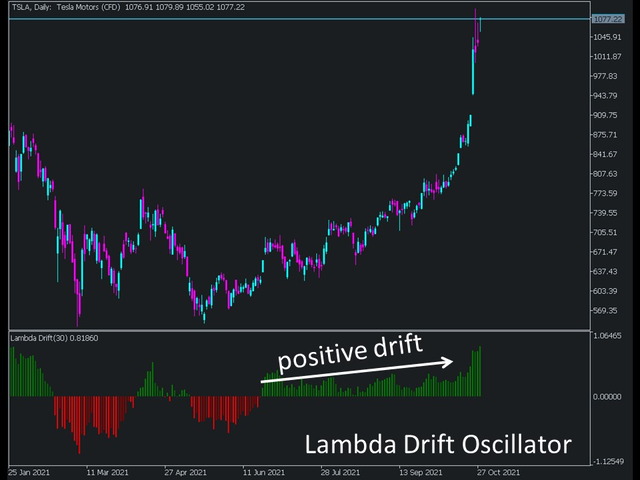This Oscillator describes the drift µ of an asset, as part of the geometric Brownian Motion (GBM). As a data basis the mean reverting log returns of the asset price is considered. It gives the percentile of drift directional. For instance, a value of 0.05 means a drift of 5%, based on the selected sample size. If the value is positive, drift to higher asset values is determined. Looking at larger timeframes mostly positive drift can be observed, as we all are also investors. Negative drift is rare, but with more extreme values.
This indicator should be used in confluence with other indicators like the Percentile of Historical Volatility (‘PHV with Correlation’) to identify potential big moves, the ‘z-score of returns’ (ZRP) to detect reversals, and the ‘Distribution Range Bands’ to determine good entry and take profit points of the market.
The mention indicators are based on statistical methods, probabilities and volatility. As price follows a random walk and assumed to follow a log-normal distributed, the provided concepts are based on log returns for normalization. Returns are mean reverting and can be approximated as normal distributed. The standard deviation of returns is volatility.
[spoiler title=”Read More…”]
These concepts are different to traditional technical analysis (TA), where most calculations are based on price and old concepts like Moving Averages or RSI oscillators. But there is no calculatable probability of a golden cross of Moving Averages. Even back testing will only show you the past. But you can calculate the probabilities of the distribution of log returns. Support and resistance or triangles have no statistical significance, but levels of the underlaying distribution of log returns gives probability of not exceeding a certain price level.
[/spoiler]





